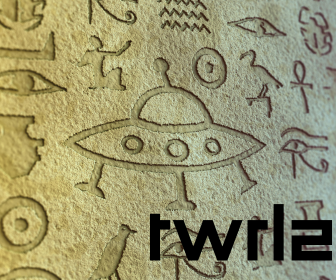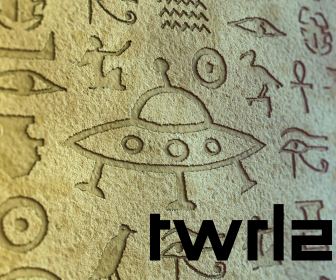Quantum Entanglement – The Spooky Connection Across the Universe
Quantum entanglement is one of the most perplexing and fascinating phenomena in modern physics. It suggests that when two particles become entangled, their states remain correlated regardless of the distance separating them. If one particle's state is altered, the other reacts instantaneously, even if they are light-years apart. Albert Einstein famously referred to this as "spooky action at a distance." Despite decades of research and experimental confirmation, scientists still struggle to fully understand how entanglement works and what it implies about the fundamental nature of reality. This article explores the science behind quantum entanglement, its implications, and its potential future applications.

Quantum Entanglement – The Spooky Connection Across the Universe
Understanding Quantum Entanglement
At the core of quantum mechanics lies the idea that particles, such as electrons or photons, can become entangled. This means their quantum states are so intrinsically connected that measuring one immediately affects the other, no matter how far apart they are. This concept defies classical intuition, which tells us that objects should only influence each other if they are in close proximity or connected by a medium.
Quantum entanglement arises from the superposition principle, which states that particles can exist in multiple states simultaneously. When two particles interact in a specific way, their quantum states become intertwined. From that point on, observing one particle's state will instantly determine the state of its entangled partner.
The implications of this are profound, as it suggests that information is transferred instantaneously between entangled particles, appearing to bypass the cosmic speed limit set by the speed of light.
Einstein and the EPR Paradox
In 1935, Albert Einstein, along with Boris Podolsky and Nathan Rosen, proposed the EPR paradox (Einstein-Podolsky-Rosen paradox) as a challenge to the then-accepted interpretation of quantum mechanics. The paradox questioned how entangled particles could instantaneously affect one another, arguing that this violated the principle of locality—the idea that objects must be in physical proximity to influence one another.
Einstein, famously skeptical of quantum mechanics, believed that some "hidden variables" must exist, determining the state of each particle in advance. According to this view, quantum mechanics was incomplete, and a deeper, yet undiscovered, theory would eventually explain these seemingly paradoxical effects.
However, later experiments and theoretical advancements demonstrated that Einstein’s classical view was incorrect, and quantum mechanics held firm.
Bell’s Theorem and Experimental Confirmation
In 1964, physicist John Bell formulated what is now known as Bell’s theorem, which provided a way to test whether quantum entanglement was truly violating classical locality. Bell proposed a mathematical inequality—Bell’s inequality—which, if violated by experimental results, would confirm that quantum mechanics could not be explained by hidden variables.
Since then, numerous experiments have been conducted to test Bell’s inequality, most notably by physicists Alain Aspect in the 1980s and, more recently, by Anton Zeilinger and others. These experiments have overwhelmingly supported quantum entanglement, demonstrating that no classical explanation can account for the observed correlations between entangled particles.
In 2022, Alain Aspect, John Clauser, and Anton Zeilinger were awarded the Nobel Prize in Physics for their pioneering work in proving the reality of quantum entanglement.
Quantum Entanglement and Information Transfer
One of the most intriguing aspects of quantum entanglement is its implications for information transfer. While entangled particles appear to communicate instantaneously, they do not violate the speed of light because no usable information is actually transmitted faster than light.
However, entanglement does enable quantum teleportation, a process where the quantum state of one particle is transferred to another at a distant location without physically moving the particle itself. Quantum teleportation has been experimentally demonstrated with photons, atoms, and even small molecules, laying the groundwork for revolutionary technologies.
Applications of Quantum Entanglement
Quantum entanglement is not just a bizarre theoretical concept—it has practical applications in various cutting-edge technologies:
- Quantum Computing – Entanglement is a fundamental feature of quantum computers, enabling qubits to process complex calculations exponentially faster than classical computers.
- Quantum Cryptography – Secure communication protocols like Quantum Key Distribution (QKD) leverage entanglement to detect eavesdroppers, ensuring unbreakable encryption.
- Quantum Teleportation – Researchers have demonstrated teleportation of quantum states over long distances, with potential applications in future data transfer and quantum networks.
- Metrology and Sensing – Entangled particles enhance precision measurements in devices such as atomic clocks and gravitational wave detectors.
- Fundamental Physics Research – Studying entanglement helps scientists probe deeper questions about the nature of space, time, and reality itself.
The Philosophical Implications of Entanglement
Quantum entanglement challenges our conventional understanding of reality. If two entangled particles can influence each other instantly over vast distances, does this mean the universe is fundamentally nonlocal? Are space and time merely emergent properties of a deeper quantum reality?
Some interpretations of quantum mechanics, such as the Many-Worlds Interpretation, suggest that all possible quantum outcomes exist simultaneously in parallel universes. Others, like Bohmian Mechanics, propose that hidden variables exist, but they operate in a highly nonlocal way.
While these interpretations remain speculative, they highlight the deeper mystery underlying quantum mechanics—one that continues to baffle and inspire scientists and philosophers alike.
Conclusion: Embracing the Mystery
Quantum entanglement is one of the strangest and most fascinating discoveries in modern physics. From Einstein’s initial skepticism to the rigorous experiments proving its reality, entanglement continues to challenge our understanding of the universe. While its full implications remain unknown, its applications in computing, cryptography, and future technologies hold incredible promise.
As research into quantum mechanics progresses, we may one day unravel the deeper truths behind this "spooky action at a distance." Until then, quantum entanglement remains a beautiful and mind-bending mystery—one that invites us to rethink our very perception of reality.
What's Your Reaction?







































